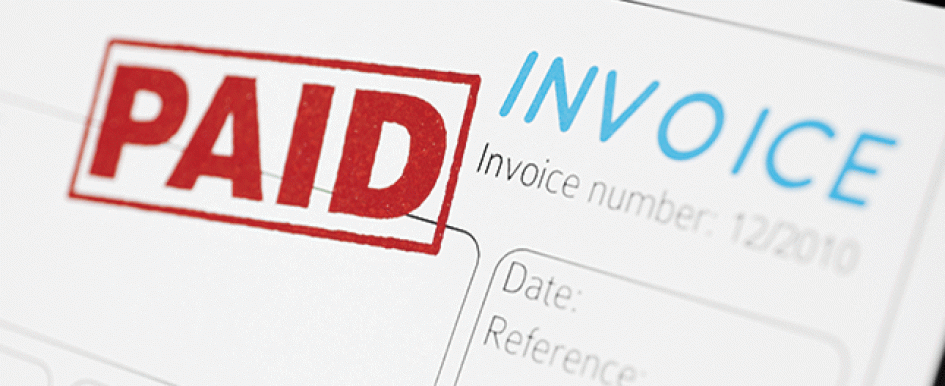
Getting paid on time in the construction industry has always been difficult. One reason is that many construction clients have bad payment records. Working with those clients leads to problems regardless of how organized your collections are.
The greater problem, however, is that many companies do not have a well-organized collections process. Instead, their collections efforts are based solely on their immediate need for money. If they need money, they call clients and ask for payments. If they don’t need money, they let clients pay at their own pace.
Having an efficient collections process is critical to the success of your business. Managing collections doesn’t have to be difficult, and it doesn’t have to include confrontational calls. Instead, it’s a matter of implementing and following a simple system and being methodical.
Step 1
Understand the terms of your contract.
Construction contracts often have a section that outlines how payments are handled. This vital section specifies how to submit invoices, which backup documentation must be submitted, to whom the documentation must be submitted and how long clients will take to pay.
Overlooking this part of the contract can create payment problems. Before signing a contract, read it thoroughly, and make sure you understand how and when you will be paid for your work.
Step 2

Extend terms only to customers who have good commercial credit.
Most commercial customers ask for net 30- to net 60-day payment terms. These terms are often included in boilerplate contracts. Assuming your company can wait for payment, provide terms only to clients who have good commercial credit. Offering terms to customers who have no credit or bad credit is risky and can result in payment delays. Checking a client’s commercial credit is fairly easy and can be done by purchasing a report from a commercial credit bureau (for example, Dun and Bradstreet).
Step 3
Use an acceptance letter for all deliverables.
You should always confirm in writing that your client has received and is satisfied with all deliverables. Some companies use a simple punch list of items that were completed. You can enhance this strategy by adding an acceptance letter.
The acceptance letter states that the client has inspected all the work and agrees that it was performed according to the contract. Most important, a customer representative should sign the acceptance letter.
Have an attorney help you craft the appropriate legal language of the letter. If the legal language is too stringent, the customer’s representative may refuse to sign it, so try to use a balanced approach.
Step 4
Submit invoices according to the procedure.
Submit your invoices according to the process stipulated in the payment section of the contract. If the contract specifies that you must submit an invoice and a copy of the punch list to the project manager and the accounts payable department, be sure to follow that procedure. Failing to do so will result in unnecessary payment delays.
Include a copy of the signed acceptance letter with the invoices. This small step often resolves potential disputes before they start.
Step 5
Monitor your invoice aging reports.
The invoice aging report is one of the best collections tools in your accounting system. It shows all open invoices and groups them based on how long they are past due. Keep your payment data current, and regularly monitor the invoice aging report. It helps you identify customers who need a collections reminder.
Step 6
Handle collections the right way.
Consider contacting a client if an invoice is past due by five days or more. When possible, call the accounts payable department. If that is not possible, send them an email. Inquire if they have all the paperwork needed to process the payment, and determine if any issues have come up. This approach generally gets your invoice paid.
If the client doesn’t pay, contact them again when the invoice is 30 days past due. Repeat the process of asking if all paperwork is in order or if they have run into any problems. If this attempt fails, call again after 45 days.
If the invoice is 60 to 90 days past due, you may have a collections problem on your hands. Ask the client upfront if they are unable to pay. If they cannot pay, you have two alternatives: either work out a payment plan with them or use a collections attorney. Use your judgment. Generally, if the issue is temporary and they have been a good customer in the past, work out a payment plan. If they have not been a good client or if they owe you a large amount of money, work with a professional.
Always be polite and professional in your communications. Being rude, argumentative or threatening seldom works.
Step 7
Handle disputes as quickly and professionally as possible.
Unfortunately, disputes are common in the construction industry and are often the reason for late payments. If you face a client dispute, evaluate its validity. If the dispute is valid, solving the problem as quickly as possible is the right course of action and will help you maintain your reputation.
In certain cases, a client may manufacture a dispute and hold your payment as ransom. Their true intent is often to get your company to do some additional out-of-scope work for free. These disputes are not valid.
If this situation happens, consider presenting the signed acceptance letter to show the client that the work was completed according to contract and accepted by one of their representatives. This step usually resolves the issue without the need for legal action.
Learn More
For details on the right way to offer payment terms, read “How to Determine Whether Your Clients are Creditworthy."
